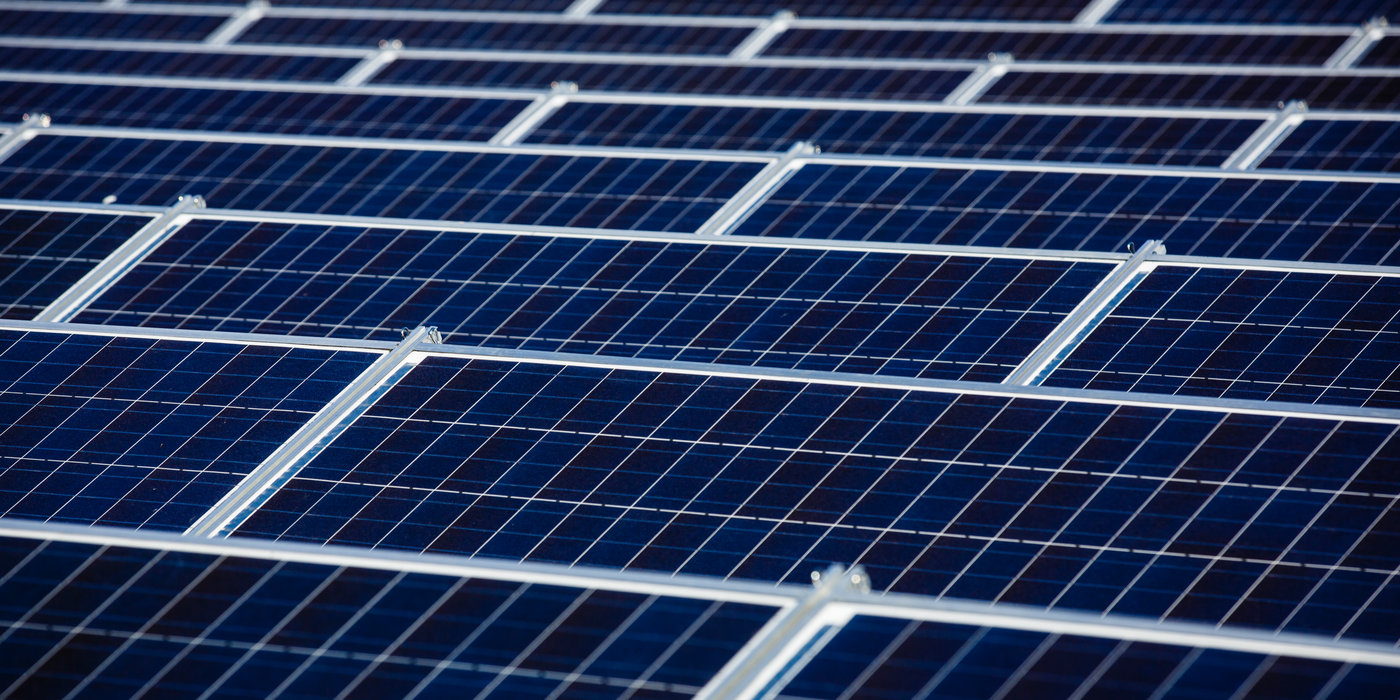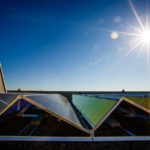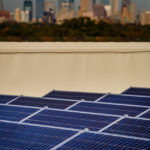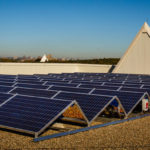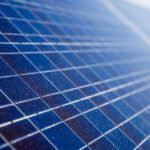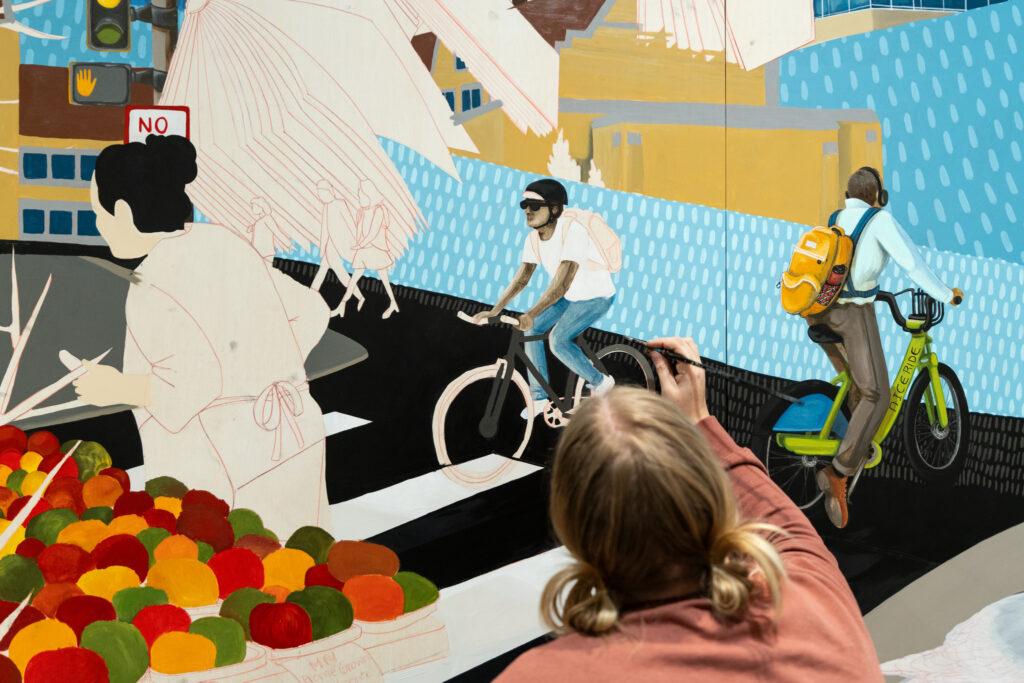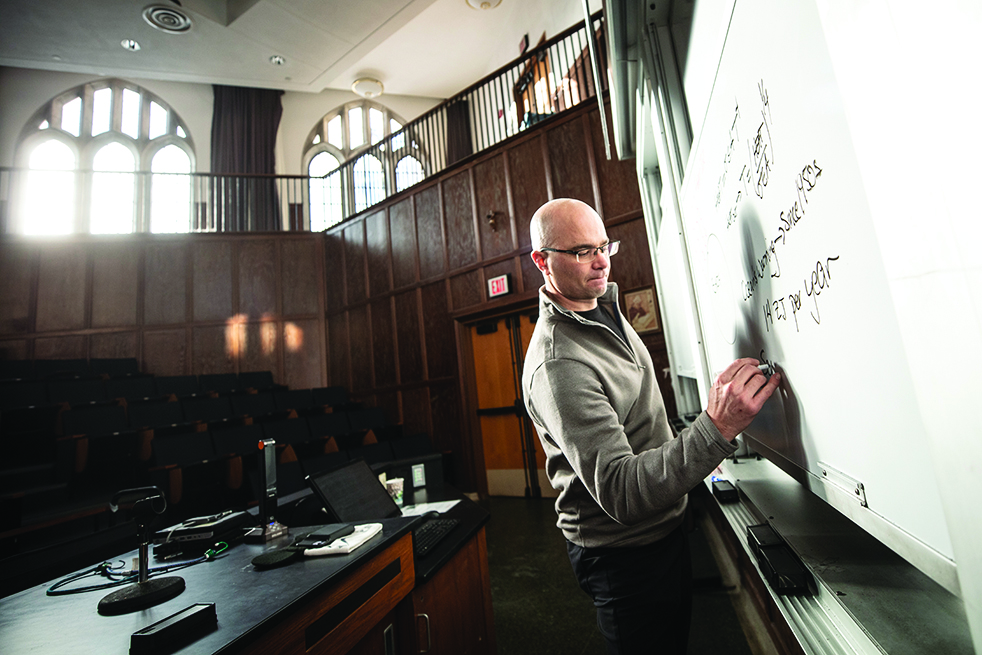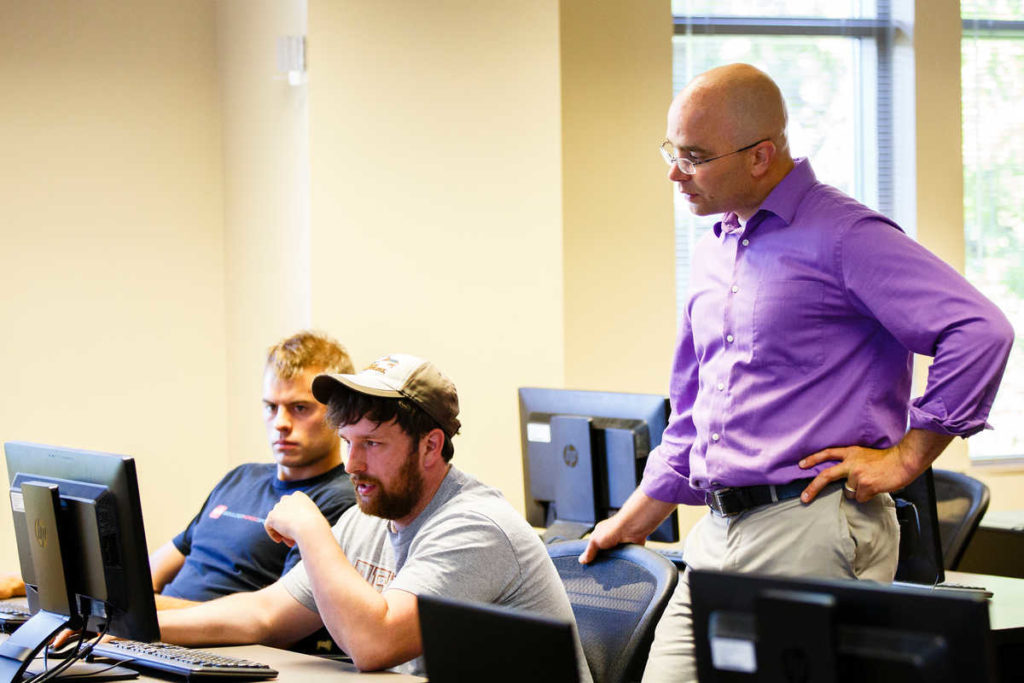The newly installed solar panels on the Anderson Student Center roof not only reduce energy costs but also benefit student research. The panels are another step toward St. Thomas becoming carbon neutral by 2035, which former St. Thomas President Father Dennis Dease pledged when he signed the American College and University President’s Climate Commitment.
The new panels will reduce carbon dioxide emissions by 45 tons in the first year. The panels serve another, more academic purpose.
“It’s really the educational component in addition to the sustainability that made the project a go for us,” said Jim Brummer, associate vice president for facilities. “We can invest in variable-frequency drives, or high-efficiency motors … but students don’t really get the opportunity to touch, feel and see behind the scenes. Hopefully this is a little more visible and engaging.”
Students in Paul Lorah’s Conservation Geography class wrote a Campus Sustainability Grant for the solar panels with a cost of $150,000. The project received $50,571 from St. Thomas’ Campus Sustainability Fund and in the form of 10 annual rebates (estimated to be more than $11,000) from the Made in Minnesota Solar Energy Program Lottery.
“The university encourages faculty to actively involve students in addressing challenges they care about, like campus sustainability,” Lorah said. “We have a history of funding student grants, and this really helps in the classroom. Students are more enthusiastic when class projects have real-world implications. Graduate schools and employers also respond well to students who go beyond just talking about problems. Getting a grant shows you can effectively address challenges.”
Nine faculty members from six departments hope to incorporate the solar array system, which includes a solar dashboard, into their courses. Examples include:
- Geography students in a Weather and Climate course would use the solar panel power to measure the amount of solar radiation reaching the surface, which would tell them the percentage of cloud cover.
- Environmental studies students would study energy markets by tracking the income generated by solar panels and the value of the carbon offsets they generate.
- Engineering professors are interested in using data on the panel’s electrical production to analyze the effect of environmental conditions (such as temperature) on panel performance.
- Biology’s Urban Ecosystem Ecology students would take real-time data and estimate how much of our energy demand could be met by solar power under different scenarios.
- Engineering’s Energy and the Environment course currently uses three small solar dishes they configured using voltage panels and spotlights for a solar energy source.
Environmental benefits
The Anderson Student Center already is LEED (Leadership in Energy and Environmental Design) Gold certified by the U.S. Green Building Council, which judges facilities on their sustainability, water efficiency, energy and atmosphere, materials and resources, indoor environmental quality, and innovation and design. Gold is the second-highest of the four LEED certification levels.
The solar panels on ASC are silicon photovoltaic, or PV, modules, and have a 25-year guarantee. They were manufactured by tenKsolar in Bloomington, Minnesota, and installed on the roof by Cedar Creek Energy.
Work still is being done to connect the solar panels to the ASC electrical system. On average, the solar panel system will produce 56,000 kilowatt hours per year for the next 25 years. Electricity generated by the system will lower UST energy costs by approximately $5,100 per year. The system will reduce 4,345 gallons of gasoline consumed per year and 108,585 gallons reduced over 25 years. It also reduces 41,477 pounds of coal burned per year, and 1,036,518 pounds of coal burned over 25 years.
Bob Douglas, chair of St. Thomas’ Sustainability Committee and coordinator of recycling and central receiving, said: “This is a very energy-intense building – the most energy-intense on campus – and to have a 40 kW system will significantly reduce the amount of carbon that is released into the air.” Carbon emissions will be reduced by 1,127.5 tons in the next 25 years.
Brummer noted that solar panels are a step in the right direction.
“For me, the biggest way to have an impact to become carbon neutral is to change behaviors,” Brummer said. “Solar panels are a nice step – it generates awareness, creates energy – but it’s a small step. The biggest thing it will do is the educational component. You never know if one of the students working on the solar panel system will find a way to make it more effective – that’s what is so exciting about this – when our students get to see a live, working model.”
